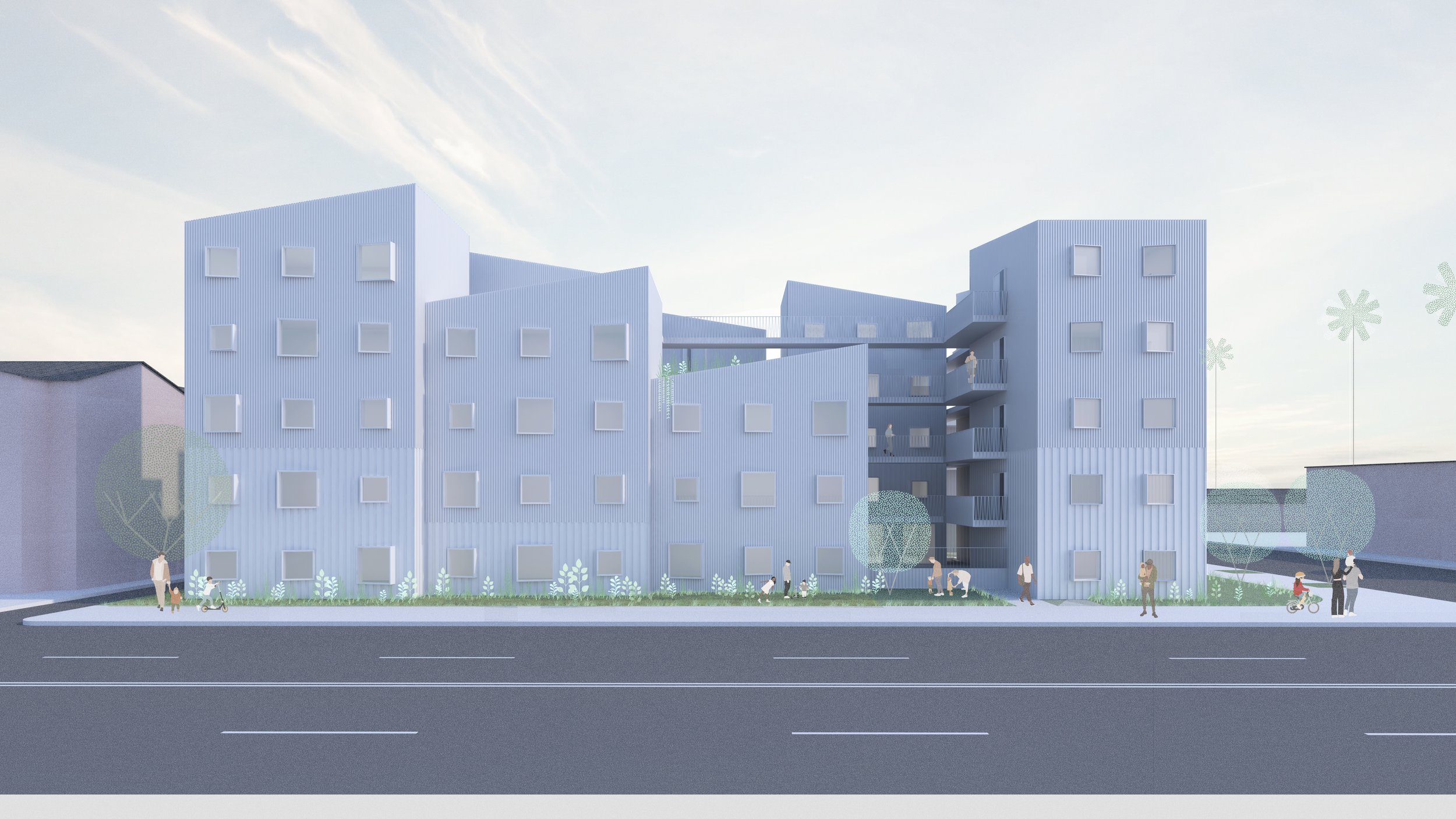How Sustainability Can Drive Equitable Holistic Affordable Housing
In Los Angeles, the challenge of sufficient access to affordable housing is daunting in the face of rising development costs and insufficient land, making the ability to meet basic needs of marginalized and low-income people even more difficult. These challenges are compounded by climate change, which is often described as a threat multiplier for vulnerable communities: from increased energy/water/food costs, health impacts from rising temperatures, and displacement from weather/climate-related factors. The most recent report from the Intergovernmental Panel on Climate Change states global temperatures have increased 1.1 degrees Celsius since pre-industrial levels, and that averaged over the next 20 years, global temperatures are expected to increase by 1.5 degrees Celsius creating the urgency to reduce our collective greenhouse gas emissions and to increase our resiliency.
Affordable housing is at the nexus of racial equity, health disparities, economic mobility, and climate resiliency. In more recent times, there has been a growing understanding that housing is simply not a building, but is an important driver of overall well-being. The role of affordable housing within the context of climate challenge is critically important as a solution to reduce emissions and to address resiliency for LMI communities and households. If the integration of a climate focus is undertaken in housing, solutions lend themselves even more toward a holistic approach that address the broader needs that affordable housing can provide.
The role of affordable housing within the context of climate challenge is critically important as a solution to reduce emissions and to address resiliency for LMI communities and households.
From an emissions standpoint, building new greener housing units and retrofitting existing ones will make an important contribution toward reducing overall emissions. Two definitions are important to distinguish primary emissions sources. The World Green Building Council offers two definitions:
Net zero operational carbon – a building that is optimally efficient, and over the course of a year, generates energy onsite, using clean renewable resources, in a quantity equal to or greater than the total amount of energy consumed onsite
Net zero whole life carbon – tracks emissions generated by the whole building across its whole lifespan, including construction materials (embodied carbon).
For Holos, achieving net zero operational carbon is an important aspiration to minimize its emissions footprint. Ensuring low- and moderate-income (LMI) households can access the benefits of lower operational emissions housing is critical from an energy justice standpoint. As the energy system transforms toward renewable sources and the related technological changes like virtual power plants (a collection of small-scale energy resources that, aggregated together and coordinated with grid operations, can provide the same kind of reliability and economic value to the grid as traditional power plants) the needs of LMI communities must be intentionally considered in this transition. Building and retrofitting lower-carbon housing will enable these units to literally be plugged into this evolving system.
Green buildings also offer important potential financial and health benefits. Designed in the right way with various local and federal sources, newly constructed housing can be more financially viable than “business as usual” construction where utility costs can be fixed that result in lower net operating costs. Moreover, a fully electric building with a tighter building envelope can produce improved health benefits. For affordable housing developers, an important question is how to best distribute the economic benefits of green buildings, including improving operating expenses, reducing tenant utility costs, or other benefits.
Achieving the promises of sustainable affordable housing requires a multi-stakeholder and holistic approach.
Achieving the promises of sustainable affordable housing requires a multi-stakeholder and holistic approach. Tenants and the community can be part of important considerations on choices such as the economic distribution of the benefits accrued from renewables or how other sustainable features such as gray water systems can help irrigate nearby amenities such as parks. Other stakeholders can be engaged such as the transportation sector to determine important emissions-related and access to jobs issues such as EV charging, the number of parking stalls in a building, and nearby access to public transportation or “last mile” transportation modes such as EV bikes/scooters. At a more micro-level, establishing use-cases of new water heating systems might need to be coordinated between tenants and owners to ensure efficient and sufficient access to hot water needs. In all, the inherent interconnected mindset of working across domains, disciplines, and sectors through the integration of a climate focus can encourage a more holistic and shared vision within a housing context.
Author
John Moon
John Moon is Vice President Climate-Aligned Philanthropy and Partnership Lead at Wells Fargo, leading grantmaking to scale sustainable finance toward equitable climate transition.
Y


